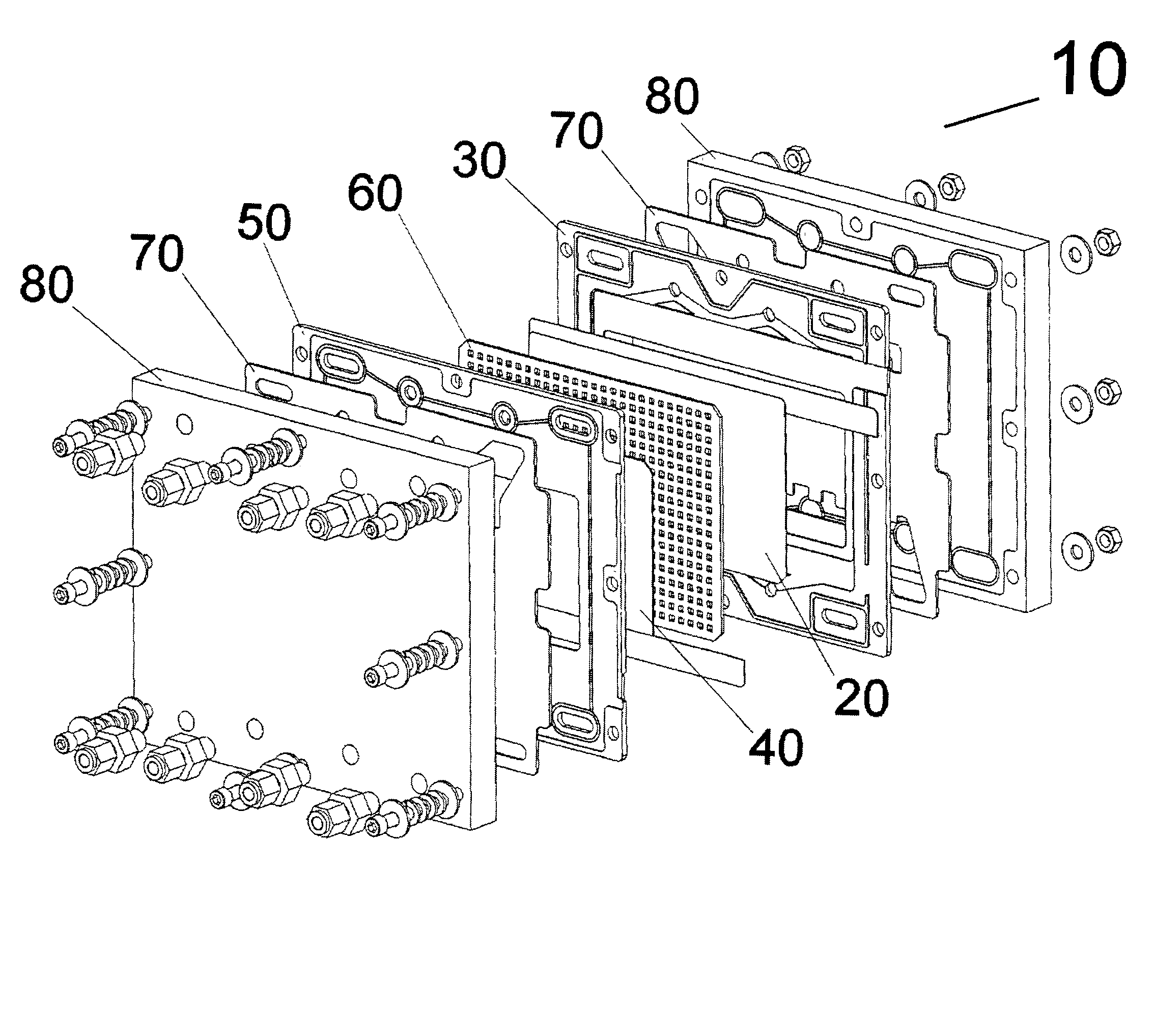Very low emission hybrid electric vehicle incorporating an integrated propulsion system including a fuel cell and a high power nickel metal hydride battery pack
a hybrid electric vehicle and fuel cell technology, applied in the direction of hydrogen, gas pressure propulsion mounting, power supply for propulsion, etc., can solve the problems of increasing the distance between the global energy system and the planet, increasing the cost of hydrogen, and inherently low cost fuel. , to achieve the effect of increasing the amount of power on demand and extending the rang
- Summary
- Abstract
- Description
- Claims
- Application Information
AI Technical Summary
Benefits of technology
Problems solved by technology
Method used
Image
Examples
example 1
[0201]Cells embodying those of the present HEV prototype system were constructed and tested. These cells and the HEV optimized prototype are described in Table 1 below.
[0202]
TABLE 1HEV OptimizedComparisonHEV PrototypePrototypepower density130016002700(W / L)specific power 600 6001000(W / kg)energy density 120 190 160(Wh / L)specific energy 55 70 60(Wh / kg)negativepastedCu substrateCu substrate,electrodethin electrodesconstructionnegative currentnickelcoppercoppercollectornegative alloymisch metalV18Ti15Zr18Ni29Cr5Co7Mn8V18Ti15Zr18Ni29Cr5Co7Mn8compositionpositivepastedpasted γ-phasepasted γ-phaseelectrodeNi (OH)2Ni (OH)2Ni (OH)2 withthinthickconductiveadditivesthinseparatorpolypropylenepolypropylenepolypropylenethinthinthincaseplasticstainless steelstainless steelaspect ratiosquaresquaresquaretopplasticstainless steelstainless steeltabsthickthick / laserthick / laserweldedwelded
[0203]As can be seen from Table 1, the embodiments of the invention, the HEV prototype cells and HEV optimized prototy...
example 2
[0205]The impact of the thermally conductive electrodes of the present invention can be evaluated independently. Comparison cells and thermally conductive cells were fabricated as described in Table 2.
[0206]
TABLE 2ThermallyComparison Cellconductive cellscapacity100 Ah100 Ahenergy density>>70 Wh / kg>>70 Wh / kgnegative electrodepastedsintered, compactedconstructionnegative alloymisch metalV18Ti15Zr18Ni29Cr5Co7Mn8compositionpositive electrodeNi (OH)2 pastedNi (OH)2 pasted ontoontofoam substratefoam substratecaseplasticstainless steeltopplasticstainless steeltemperature after80° C.34° C.charge / dischargecycling at C / 10overcharge to 120%of capacity
example 3
[0207]Cells (1-7 in Table 3, below) were fabricated as described in U.S. Pat. No. 5,330,861 using a high loft polypropylene separator and negative electrode alloy having the following composition:
V18Ti15Zr18Ni29Cr5Co7Mn8
except that the separators were sprayed with 1% aqueous solutions of PTFE on the side facing the negative electrode prior to assembling the cell. The control cells (designated C1-C7 in Table 3, below) were assembled using untreated separators.
[0208]These cells were charged and discharged at the indicated temperatures. The cells having the 1% PTFE coating on the surface of the separator demonstrated a consistent pressure reduction. As can be seen, this effect is even more pronounced at elevated temperatures and represents a significant improvement over the prior art. Table 3 also shows that cells of the present invention suffer no tradeoffs in terms of capacity.
[0209]
TABLE 3OverchargeTemperaturePressureCapacity(° C.)(psi)(Ah)ControlcellsC10324.77C210394.58C320894.46C...
PUM
| Property | Measurement | Unit |
|---|---|---|
| particle size | aaaaa | aaaaa |
| particle size | aaaaa | aaaaa |
| temperatures | aaaaa | aaaaa |
Abstract
Description
Claims
Application Information
 Login to View More
Login to View More - R&D
- Intellectual Property
- Life Sciences
- Materials
- Tech Scout
- Unparalleled Data Quality
- Higher Quality Content
- 60% Fewer Hallucinations
Browse by: Latest US Patents, China's latest patents, Technical Efficacy Thesaurus, Application Domain, Technology Topic, Popular Technical Reports.
© 2025 PatSnap. All rights reserved.Legal|Privacy policy|Modern Slavery Act Transparency Statement|Sitemap|About US| Contact US: help@patsnap.com



